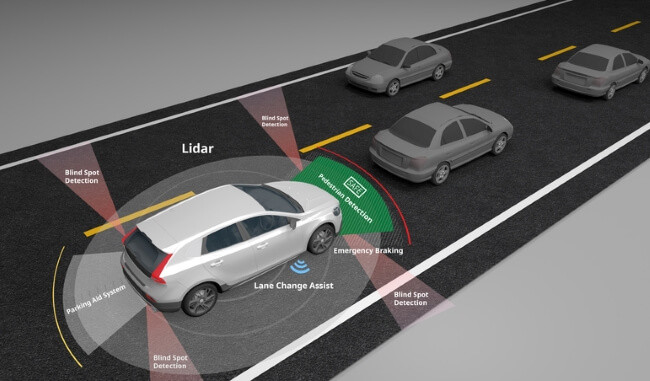Autonomous Sensing Technology Collaboration Between Analog Devices and First Sensor
| 13-09-2019 | By Rob Coppinger
Analog Devices Inc (ADI) has announced a collaboration with German company First Sensor to develop autonomous sensing technology-related products to enable unmanned vehicles in the air, sea and on the road.
These autonomous vehicles could be used for transportation, by the smart agriculture and industrial manufacturing sectors, and other industries. Analog Devices and First Sensor are developing offerings that shrink the LIDAR signal chain to enable higher system performance as well as reduce the size, weight, power and cost for manufacturers designing sensing and perception technology for their autonomous safety systems. This cooperation with First Sensor marks ADI’s next phase in implementing its Drive360 autonomous driving solutions strategy. The firm’s Drive360 suite of technologies leverage its core competencies in high-performance microelectronic mechanical systems, millimetre wave radio and photonics and optics technologies.
“The first step in our working together is to optimize ADI’s industry-leading transimpedance amplifiers (TIAs) with First Sensor’s avalanche photodiodes (APDs) so we can offer our customers more powerful and efficient LIDAR solutions, and better support the mass commercial launch of LIDAR systems into the autonomous transportation market,” said Stewart Sellars, general manager, LIDAR, Analog Devices.
Improved LIDAR Systems
The goal for ADI is to provide the automotive industry with holistic solutions and to become a dedicated partner for different sectors’ highly automated and autonomous driving technology needs. For more than 25 years, ADI has been developing sensor technology for transportation safety. Its recent developments include multi-channel TIAs specifically designed to convert wide dynamic range photocurrent into a low-impedance voltage signal.
First Sensor also has more than 25 years of experience manufacturing LIDAR APDs. These are highly sensitive detector arrays that convert light into photocurrent. Optimising the interconnection between the APDs and TIAs is critical as it significantly influences the noise floor and bandwidth that can be achieved.

Improvements in the noise floor and bandwidth directly translate to LIDAR systems which can detect objects at a longer range and with a higher precision. LIDAR is a growth driver for First Sensor and the company is preparing for the requirements of volume production with forward integration and an accelerated cost roadmap in line with its strategy for profitable growth.
“The market for LIDAR systems is maturing with customers expecting a renewed focus on implementing economically and technically compatible solutions,” said Dr Dirk Rothweiler, chief executive officer of First Sensor. “Adapting APDs and TIAs to each other is a logical next step in this evolution. By expanding our cooperation with Analog Devices, our customers will benefit from better LIDAR receiver performance.”
